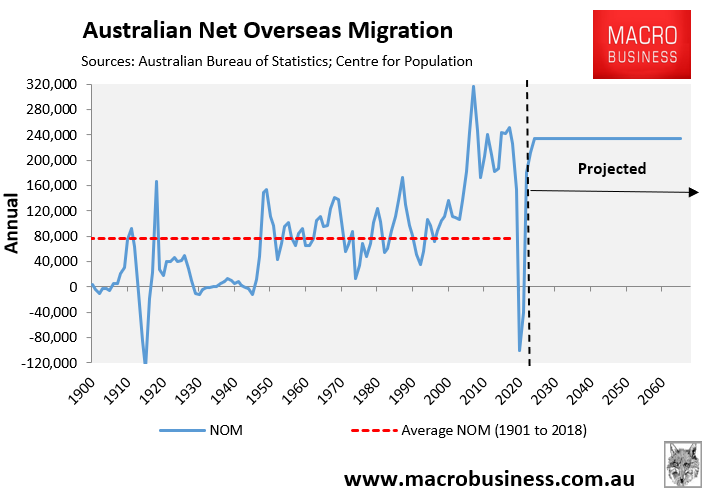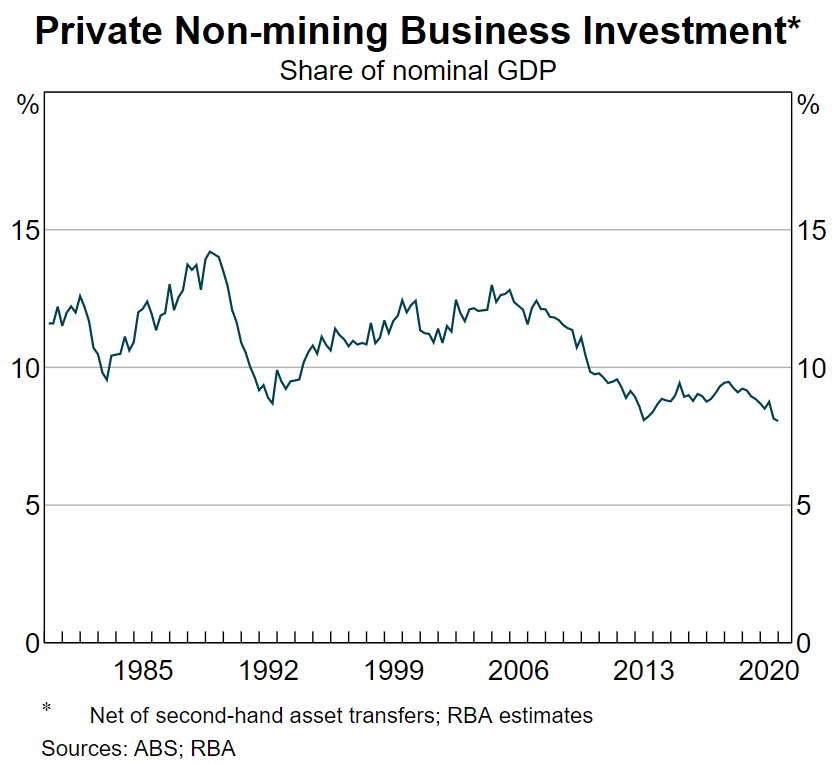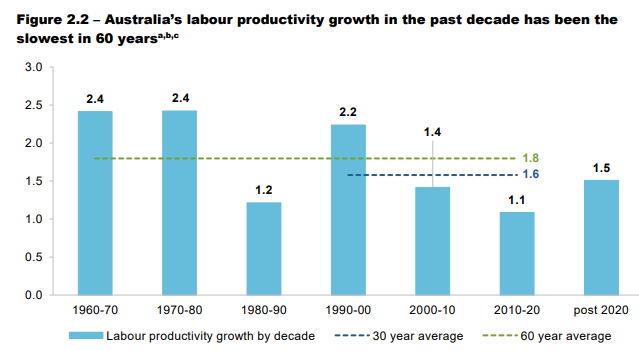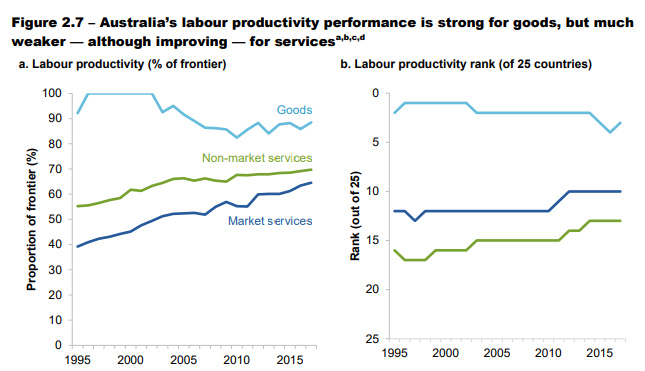Former secretary of the Australian Treasury, Ken Henry, gave a speech last week to the Tax Institute lamenting Australia’s poor productivity performance, which has been driven by capital shallowing.
As reported in The ABC (the speech is not available online), Henry said much of Australia’s productivity growth, historically, had been driven by “capital-deepening” (i.e. higher capital per worker), thanks to a strong rate of business investment.
However, capital-deepening has stalled this century, with Australia instead experiencing capital-shallowing, whereby physical investment has declined in the non-mining sectors.
“The collapse in the non-mining investment rate is remarkable”, Henry said.
Henry explained how the retreat of non-mining investment had coincided with two decades of declining average living standards, which has likely pulled down wages.
“Understanding the size of the adjustments that would be needed to restore international competitiveness provides a plausible explanation for a decade or more of sluggish nominal wages growth”, he said.
Henry explained how the mining boom was handled poorly by Australia’s governments and has helped hollow-out the economy via ‘Dutch Disease’.
“To put in a nutshell, the mining boom has left us with a very big competitiveness overhang that will probably take decades to work off”, Henry said.
He also argued that “much of the loss of international competitiveness caused by the mining boom could have been avoided had we had the intellectual and political capacity to apply a rational taxation regime to the windfall profits of mining companies”.
“We didn’t have to ‘let it rip’. We didn’t fall into this hole by accident. We chose to be here”.
Henry called for major tax reform “to reduce the rate of tax applying to the normal return on capital while increasing the rate of tax applying to economic rents, including rents derived from the exploitation of our non-renewable resources, like coal and gas”.
While I 100% agree with Henry’s sentiments I would also like to point out that Australia’s capital shallowing has occurred, in part, due to the mass immigration ‘Big Australia’ policy:

Think about it logically for a minute. Australia’s population growth surged from the mid-2000s via immigration, at the same time as business investment collapsed:

Given the “capital deepening” and “capital shallowing” depends on the stock of capital per worker, obviously increasing Australia’s population by more than six million people this century has contributed to the nation’s capital shallowing and the decline in productivity.
This decline in productivity was illustrated in the Productivity Commission’s latest review, also released last week. This showed that labour productivity growth between 2010 and 2020 was the worst on record at just 1.1% per annum:

The Productivity Commission attributed this poor productivity growth to the increasing share of services in the economy:

I have argued for a long time that Australia’s mass immigration policy is actually contributing to Australia’s poor productivity and declining living standards.
First, the massive rise in population growth has created chronic infrastructure bottlenecks across capital cities, driving up congestion costs.
The infrastructure investment required to keep pace with population growth is much more expensive than in the past, due to diseconomies of scale (e.g. tunnelling and land buy-backs).
This means that every additional unit of infrastructure increases average costs across the economy, acting as a productivity drain.
Second, while migrants typically have high levels of labour force participation, the migrants that Australia imports are typically less productive, as evidenced by them earning lower than median wages and suffering higher unemployment than the general population.
Third, the increased labour supply and downward pressure on wages caused by mass immigration necessarily disincentivises firms from investing in labour-saving technologies and automation to lift productivity (see here and here).
After all, why invest in these productivity enhancements when you can instead bring in low cost workers to do the task?
There are broader macroeconomic arguments suggesting that strong immigration suppressed Australia’s productivity growth, mainly by diverting resources (eg, capital and labour) from the tradable to non-tradable sectors.
Australia has held the pillow over its globally exposed manufacturing and replaced its employment with careers in a never-ending housing construction sector that never provides enough homes for its people.
Australia has also turned its once well-respected university sector into a lower quality, casualised conduit for more immigrants, who are prepared to pay full fees for courses primarily because they enable migration to Australia.
Tradable goods and services are those that can be sold at locations other than at the place of production (i.e. can be exported overseas). Non-tradable products are those than can only be sold at the place of production (eg, coffees, personal training and haircuts). As noted above by the PC, tradable firms are typically more productive than other businesses because they benefit from economies of scale and must be competitive against firms both nationally and internationally.
Thus, the diversion of resources resulting from mass immigration encourages growth in lower productivity ‘people-servicing’ industries, alongside diverting the nation’s productive effort into houses and infrastructure.
Australia’s economic performance over the pre-pandemic years are consistent with this argument given the fall in both productivity and non-mining business investment as the Australian economy became increasingly concentrated on ‘people servicing’ (see above chart).
It is also interesting that labour productivity improved post 2020 when immigration turned negative.
Finally, Australia is unique in that it pays its way in the world mostly by selling its fixed endowment of minerals.
Therefore, importing a larger population via immigration necessarily dilutes this mineral wealth among more people, resulting in lower wealth per capita (other things equal).
The upshot is that the Albanese Government’s record immigration policy will very likely achieve the same results as last decade.
That is, ongoing sluggish productivity and per capita GDP growth, low wage/income growth, and overall falling livability as both housing and infrastructure are crush-loaded.
It is the wrong policy prescription for the nation that sadly Ken Henry nor the Productivity Commission has dared challenge.

